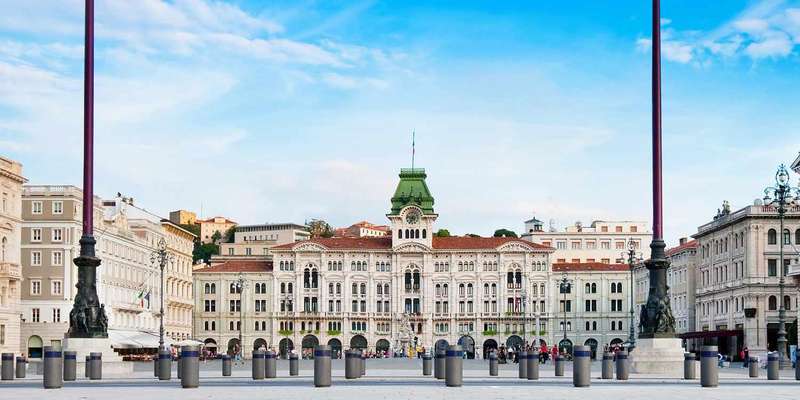- Home
- Useful Tips
- Evening activities in Trieste...
As dusk settles over Trieste, visitors often face a cultural conundrum when museums shutter their doors. Over 68% of travelers report frustration when key attractions close early, leaving evenings feeling unplanned and opportunities wasted. The Adriatic port city transforms after sunset, yet without local knowledge, you might miss its most atmospheric experiences – from moonlit piazzas echoing with literary history to hidden enotecas serving Friuli's finest wines. This disconnect between daytime tourism and nighttime authenticity leads many to retreat to generic hotel bars, unaware that Trieste's soul emerges when most guidebooks fall silent. The challenge isn't finding any activity, but discovering those magical moments that turn an ordinary evening into lifelong travel memories.


Starlit strolls through Habsburg grandeur
Trieste's architectural splendor takes on new drama under evening illumination. Begin at Piazza Unità d'Italia, Europe's largest sea-facing square, where the play of golden light on neoclassical facades creates a living postcard. Locals favor the 8pm passeggiata hour when the square becomes a social stage. Wander toward Teatro Romano, where ancient stones glow under strategic spotlights – the perfect backdrop for contemplative moments. For harbor views with a breeze, follow the Rive waterfront promenade past bobbing boats to the iconic Lanterna lighthouse. These self-guided walks require no reservations or fees, just comfortable shoes and a willingness to see the city through twilight eyes. Photography enthusiasts will find the blue hour (about 30 minutes after sunset) ideal for capturing Trieste's hybrid Austro-Italian character without daytime crowds.
Aperitivo like a local at historic cafes
Trieste's cafe culture, born in the 18th century, reaches its zenith during evening aperitivo (6-9pm). Skip tourist traps for legendary institutions like Caffè San Marco, where wood-paneled walls whisper stories of James Joyce and Italo Svevo. The ritual here involves ordering a 'Capo in B' (Trieste's signature coffee with cream) or a Aperol spritz paired with complimentary cicchetti (small bites). For wine lovers, Enoteca Parenzana offers 300+ regional labels in a converted Austrian cellar. These aren't merely drinks but time-traveling experiences – the average Triestino spends 2.5 hours savoring this daily tradition. Arrive by 7pm to secure outdoor seating at Antico Caffè Torinese, where people-watching comes with views of Baroque palaces. Remember, service is typically at the counter first, then find your table – a nuance that separates visitors from regulars.
Moonlight melodies and open-air performances
When the sun dips behind Miramare Castle, Trieste's music scene awakens. From June to September, the courtyard of Castello di San Giusto hosts evening concerts ranging from jazz to classical under the stars – check the municipal calendar for free events. For something uniquely Triestine, seek out 'liscio' dances at local circoli (social clubs), where waltzes blend with Balkan rhythms. Literary buffs can join the 'Joyce by Night' walking tour (offered weekly by a local bookstore), retracing the author's haunts through dimly-lit alleys. Even simple acts like listening to buskers along Canal Grande or catching an open-air cinema screening at Porto Vecchio become magical when framed by Trieste's nocturnal atmosphere. These experiences require minimal planning but deliver maximum local flavor, often costing less than museum admission.
Midnight flavors at authentic osterie
As northern winds cool the carso cliffs, Trieste's eateries transform into warm havens of culinary tradition. Family-run spots like Buffet da Pepi stay open until midnight, serving their famous boiled pork dishes since 1897. For seafood, Osteria da Marino's lantern-lit terrace offers branzino fresh from the Adriatic. The key is embracing the local timeline – dinner starts at 8:30pm, with the best energy around 10pm when workers finish their shifts. Don't miss the chance to try 'caldaie' (slow-cooked stews) at Trattoria da Giovanni, where recipes haven't changed since Tito's era. End your evening with a glass of Terrano wine at Malcanton, a tiny enoteca where the owner might share stories of Trieste's complex history. These aren't just meals, but edible anthropology lessons that reveal the city's multicultural soul.



